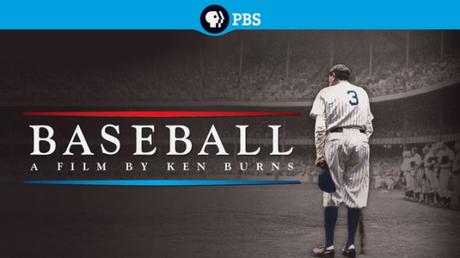
Continuing on our journey through Baseball: A Film By Ken Burns, we have now reached the Fourth Inning of this documentary series. Subtitled “A National Heirloom,” this part of the series focuses primarily on Babe Ruth. Bob Costas opens this disc with an anecdote about an argument between an American and a British man that comes to a head when the American man retorts childishly, “Screw the king!” The Brit’s reply to this: “Yeah, well screw Babe Ruth!” It’s a revealing anecdote, not only in terms of the greatness of the Great Bambino to the minds of American citizens, but also when thinking about the influence of baseball on American culture as a whole, even in the eyes of the rest of the world.
Prior to 1920, baseballs used in games weren’t changed out with the frequency that we see today. At times, entire games could be played with a single baseball, if that ball never left the park. Pitchers took it upon themselves to scuff, dirty, and otherwise sabotage the ball any way they could, thus ensuring it would fly erratically, making it more difficult to hit, and thus giving pitchers a distinct advantage. However, the death of Cleveland shortstop Ray Chapman, the victim of being hit in the head by a pitch, changed all that. Umpires were now under orders to throw out a clean baseball the moment one showed any signs of dirt. This, combined with a now more tightly-wound baseball, marked the dawn of new era in the game, in which home runs ruled the day.
Burns launches into a biographical segment of George Herman Ruth’s early life. I was astonished to see that Ruth’s sister, Mamie Ruth Moberly, had survived long enough to contribute to the commentary of the documentary (she died in 1992). Ruth’s introduction to baseball came in reform school, having been sent there by his parents, who declared him “incorrigible.” His talent for the game, both as a hitter and as a pitcher, became quickly apparent, and he went on to be signed by the Baltimore Orioles.
From the Orioles, Ruth was soon sold to the Boston Red Sox, where he shined as a pitcher. From 1919 to 1920, Red Sox owner Harry Frazee sold Ruth, and a number of other Red Sox players to the Yankees. The sale of Ruth initiated what would become known as the Curse of the Bambino.
Ty Cobb, we learn, despised Babe Ruth and the change in baseball’s style of play that came as a result of Ruth’s performance. However, Ruth so dominated the game and the record books that Cobb’s disapproval fell on deaf ears. But Ruth’s dominance didn’t end on the field. Off the field, he proved a fan favorite as his rambunctious personality and eagerness to please made him a lovable individual. His excesses, e.g. blowing his pay on luxuries and frequenting whorehouses, were kept out of the papers, as the press knew he was simply too popular with the fans.
After he set that famous record of sixty home runs in a single season in 1927, Babe Ruth’s fame exploded. He became a mainstay in advertising, as companies sought to capitalize by attaching his image to their products. Everyone wanted a piece of the Great Bambino.
Burns breaks from his coverage of Ruth to discuss racism further. The Harlem Renaissance saw a flourishing of black culture, and Rube Foster established the Negro Leagues. The style of baseball encouraged by Foster sounds exciting enough to make me wish I had been around to watch some Negro Leagues games. Indeed, between Ruth in the MLB and style of the Negro Leagues, the 1920s must have a been a fun time to be a baseball fan.
During this time period, coverage of baseball underwent some changes. The sports pages became a daily feature of urban newspapers, and the personalities of baseball writers varied widely. Fans could also track games via animated scoreboards, displayed in the cities. The development of radio broadcasts of baseball games allowed fans to follow along with the action as it happened.
Burns makes a passing mention of some of the other big hitters of the era, such as Rogers Hornsby, Tris Speaker, and George Sisler. Of those sluggers mentioned, Hornsby got the most attention, but not nearly the amount of attention that Babe Ruth received. Walter Johnson received a nod for his continuing domination as a pitcher in what had become a hitter’s game, and in 1924, he helped lead the Senators to a World Series victory over the Giants. Lou Gehrig, a rookie during the 1925 season, received a nod as well, his consecutive games streak already underway.
During this time also, Buck O’Neil joined the Kansas City Monarchs, the best team in the Negro Leagues. Branch Rickey, meanwhile, developed baseball’s first farm system with the St. Louis Cardinals. Teams around the majors quickly followed suit and minor league baseball was thus born.
It was a booming decade for the sport. However, the disc concludes in the year 1929, when the stock market collapsed and the onset of the Great Depression was upon the nation.




